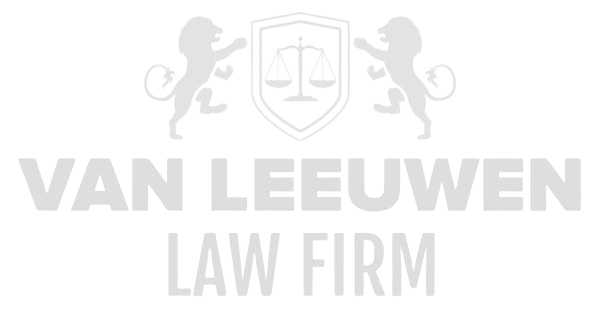In today’s business environment, compliance is no longer a secondary concern or a mere administrative formality. It is an existential matter: a strategic instrument that determines a company’s integrity, reputation, and continuity. In a world where financial and economic crime is becoming increasingly sophisticated, and where a single misstep—whether intentional or inadvertent—can completely destabilize an organization, a robust compliance program is not a luxury but an absolute necessity. Anyone who believes that ticking off a checklist or implementing half-hearted internal procedures is sufficient is overestimating their own protection and underestimating the resolve of criminal actors and regulators. Legal proceedings, sanctions, and reputational damage do not unfold slowly; they strike relentlessly, and public trust, once compromised, is exceedingly difficult to restore. An organization that fails to actively arm itself walks a tightrope over an abyss of liability and societal condemnation, without any safety net.
The pressure on companies to operate with integrity and responsibility has increased exponentially. Stakeholders—from investors and regulators to consumers and civil society organizations—no longer accept superficial compliance; they demand transparency, ethical awareness, and tangible social responsibility. At the same time, globalization exposes companies to a complex web of cross-border regulations: the GDPR, the FCPA, European anti-money laundering directives, and countless other obligations form not an optional framework but a stringent standard to which every business must adhere. Underestimating this landscape opens the door to sanctions, reputational harm, and even criminal prosecution. Compliance, therefore, is not a static document or a software module; it is a living, multidisciplinary ecosystem in which legal expertise, business insights, and technological capabilities must seamlessly converge. It is a continuous process of evaluation, updating, and anticipation, where every lapse is not merely an administrative oversight but an open invitation to the market, regulators, and criminal actors to challenge—and often destroy—the organization.
The Need for a Strategic Compliance and Risk Management Framework
An effective compliance and risk management framework functions as the nervous system of an organization: it detects stimuli from the internal and external environment, processes this information, and activates a response aimed at ensuring stability and security. This metaphor illustrates that compliance is not an isolated function but an integral part of strategic business operations. Such a framework must be capable not only of reactively registering and mitigating risks but also of proactively identifying, analyzing, and managing them. This proactivity requires in-depth knowledge of the legal and economic context in which the company operates, as well as the ability to model scenarios anticipating future risks.
The strategic importance of compliance manifests itself not only in preventing legal sanctions, fines, and supervisory measures but also in strengthening trust among investors, customers, and partners. A company that can transparently demonstrate that it manages risks, has implemented measures against corruption, money laundering, conflicts of interest, and other forms of financial-economic crime, distinguishes itself positively in a market increasingly sensitive to ethics and governance. Compliance thus becomes not only a shield against threats but also a sword that can provide a competitive advantage.
Moreover, designing an effective compliance framework requires an analysis of the organization’s specific risk profiles: what constitutes a marginal risk for one company may be catastrophic for another sector or geographic area. Determining these profiles requires a forensic approach, scrutinizing business processes, exposing legal vulnerabilities, and analyzing dependencies. Only based on this in-depth diagnosis can appropriate control measures be implemented that align with both the nature and scale of the risks.
Financial and Economic Crime as a Compliance Threat
In the field of compliance, financial and economic crime arguably represents the most treacherous and destructive category of risks. Over recent decades, this crime has evolved into a phenomenon characterized by increasingly complex structures, cross-border interconnections, and technological sophistication. Traditional crimes such as fraud and corruption have evolved into high-tech operations involving cryptocurrencies, fake identities, offshore structures, and algorithmically generated transactions. These methods increasingly evade traditional control methods and thus require a compliance approach that is both innovative and rigorous.
Money laundering exemplifies this challenge. While the legal definition may be clear, detecting it in practice is anything but simple. Criminal proceeds are mixed with legitimate funds, using shell companies, complex ownership structures, and international transaction chains. A company that operates without sharp due diligence relationship management risks unknowingly becoming part of a money laundering scheme, with all the associated legal and reputational consequences. Compliance must therefore function not only as a legal barrier but also as an early warning system that detects and investigates suspicious patterns before they embed themselves in business operations.
Besides money laundering, corruption — in the form of bribery, conflicts of interest, or undue influence — is a structural problem particularly prevalent in international trade relations. Companies active in countries with high corruption indices are expected to implement additional measures such as staff training, whistleblowing procedures, and anti-bribery due diligence on agents, distributors, and joint venture partners. Legal liability is not geographically confined: enforcement authorities increasingly apply the principle of extraterritoriality, meaning violations abroad can lead to prosecution in the company’s home country.
Due Diligence and Internal Control Mechanisms
A solid compliance framework begins with a carefully organized due diligence process. Without thorough knowledge of customers, suppliers, partners, and other stakeholders, it is impossible to adequately assess risks. Know Your Customer (KYC) processes form the foundation upon which further control mechanisms are built. This requires not only collecting identity data but also analyzing the origin of funds, ownership structures, sanction lists, and the risk profile of the country in which the entity operates. This information must be maintained dynamically so changes are noticed promptly.
Internal control mechanisms should function as a system of checks and balances within the organization. These mechanisms include authorization procedures, segregation of duties, audits, and reporting obligations. Crucially, these structures must not only exist formally but must also be effective and continuously evaluated for their performance. Compliance audits, both announced and unannounced, can serve as tools to test the effectiveness of these measures. Additionally, it is essential to have a functioning whistleblower procedure that protects and motivates employees to report suspected misconduct without fear of reprisals.
The implementation of technological tools can support this, provided they are correctly integrated into the compliance process. Data analysis, machine learning, and artificial intelligence can reveal patterns invisible to the naked eye. However, technology is no substitute for critical judgment; compliance officers must still possess deep legal knowledge, an ethical compass, and analytical skills. Only then can the signals generated by technology be correctly assessed and the compliance process adequately fulfill its protective role.
The Culture of Compliance and Integrity
No compliance program can function effectively without an underlying corporate culture in which integrity, responsibility, and ethical awareness are deeply embedded. This culture cannot be imposed by policy documents or external audits; it must be internalized by all levels of the organization, from the boardroom to the shop floor. This requires continuous education, clear communication, and explicitly naming values and norms. Compliance then ceases to be an externally imposed obligation and becomes an inner conviction that guides behavior and influences decisions.
The tone from the top is crucial in this regard. Directors and supervisors must not only bear formal responsibility but also demonstrate exemplary behavior. When they compromise on integrity or fail in their duty to correct non-compliant behavior, they undermine the entire compliance process. Therefore, it is important that the governance structure clearly defines who is responsible for compliance, reporting, and oversight. Moreover, management must be demonstrably involved in compliance initiatives and willing to invest both financially and organizationally.
The process of ethical decision-making also deserves explicit attention within the compliance policy. Often behavior occurs in gray areas where legal rules provide only partial guidance. Developing ethical competence — the ability to recognize moral dilemmas and make independent choices — is essential for a culture of integrity. This requires training, dialogue, and reflection so employees are equipped to make the right decisions in complex situations.
Governance and Responsibility within the Organization
Institutionalizing compliance requires a governance structure that clearly delineates authorities, responsibilities, and reporting lines. Within this structure, it must be clear who holds ultimate responsibility for legal and regulatory compliance, who monitors the effectiveness of the compliance program, and how deviations are reported and addressed. Without such clarity, a situation may arise where no one feels responsible and where misconduct goes unnoticed or unaddressed.
The role of the Chief Compliance Officer (CCO) is crucial here. This officer must have sufficient mandate, independence, and resources to effectively perform their duties. In many organizations, compliance is still placed under the legal department, which can lead to conflicts of interest or insufficient focus. Therefore, it is advisable to position compliance as an independent function within the organization, reporting directly to the board or supervisory board.
Transparency and accountability are also essential pillars of the governance framework. Regular reporting, both internally and externally, ensures that compliance does not remain a black box but becomes a transparent process whose effectiveness and scope are verifiable. External assessment, such as certification or independent audits, can contribute to the credibility and reliability of the compliance policy. Governance and compliance are inseparably linked: without good governance, no compliance; and without compliance, no sustainable governance.
Evaluation and Improvement of the Compliance Program
Compliance is not a static concept; it is a dynamic process that requires continuous attention and adjustment. The environment in which organizations operate is constantly changing: laws and regulations evolve, new technological opportunities and threats emerge, and societal expectations shift accordingly. As a result, a compliance program must be regularly and systematically evaluated to remain relevant and effective. This continuous evaluation requires a thorough analysis of both the internal functioning of the program and the external circumstances that influence compliance risks.
Such an evaluation is more than just a checklist; it involves an in-depth investigation into the extent to which policies are actually applied in practice, whether controls and audits effectively identify risks, and if employees are aware of and engaged in compliance. Irregularities, missed signals, or shortcomings should not be ignored but rather seen as opportunities to improve the system. This culture of self-criticism and openness is essential to prevent compliance from becoming a mere paper tiger that is only effective on paper.
Improvements can range from tightening internal procedures to investing in new technologies such as data analytics and artificial intelligence, which can detect patterns in financial transactions that might otherwise go unnoticed. Integrating lessons learned from incidents, both within the organization and from the sector, strengthens the program and makes it more resilient. Only through this ongoing cycle of evaluation, feedback, and adaptation can compliance fulfill its role as a protective instrument in an ever-changing world.
Integration of Compliance into Organizational Strategy
Compliance should not be viewed as a standalone part of the organization but must be an integral component of business strategy and decision-making. This means that compliance issues are involved early on in strategic choices, for example during mergers and acquisitions, market entry, product development, or technological innovation. By seeing compliance not as a burden but as an opportunity to manage risks and achieve sustainable growth, a synergy arises that strengthens the company’s resilience.
In this integrated approach, compliance becomes an instrument for value creation. Organizations that operate demonstrably compliant build a stronger reputation, increase stakeholder trust, and improve their position in competitive markets. This is particularly true in sectors where trust and transparency are crucial, such as financial services, healthcare, and technology. Moreover, a strategic approach allows space for innovation within frameworks that control risks without hampering the company’s dynamism.
This requires multidisciplinary collaboration within the organization, where legal, financial, operational, and IT departments jointly take responsibility for complying with and optimizing compliance. This calls for clear communication, shared goals, and a culture where compliance is seen as a common interest. Compliance thus ceases to be a cost factor and becomes an investment in the company’s long-term continuity and competitive strength.
Technological Challenges and Innovations in Compliance
The rise of digital technologies has profoundly changed the compliance field. On the one hand, technological innovations offer unprecedented opportunities to detect and manage risks; on the other, they bring new challenges. Consider the exponential growth of data, the complexity of cloud computing, the emergence of blockchain and cryptocurrency, and the risks of cybercrime. These developments require a deep understanding of both legal frameworks and technological possibilities and threats.
Compliance professionals increasingly need knowledge and expertise at the intersection of law and technology. For example, it is essential to use data analytics to monitor transactions and behaviors, while strictly adhering to privacy legislation such as the GDPR. The deployment of artificial intelligence can help recognize patterns beyond human control but also raises ethical and legal questions about transparency, bias, and accountability. This technological dimension makes compliance more complex but also more effective when properly applied.
The challenge also lies in timely identification of technological trends and anticipating new risks. This requires a proactive attitude, a network of knowledge exchange, and collaboration with experts in cybersecurity, data governance, and technology development. Only by seeing technology not as a threat but as an ally can compliance maintain its role in an era of digital transformation and increasing cyber threats.
Sustainable Competitive Advantage through Compliance
An advanced and well-integrated compliance program not only provides protection but can also generate a sustainable competitive advantage. Organizations that strategically deploy compliance differentiate themselves through reliability, transparency, and integrity—qualities increasingly valued in a more vocal and critical societal climate. This reputation can be decisive in attracting customers, investors, and talent and offers protection against legal and financial risks that threaten the company’s survival.
Moreover, a solid compliance program leads to operational efficiency by detecting and addressing risks early, thereby preventing costly incidents and procedures. By integrating compliance into business processes, synergies can be realized with quality management, innovation, and strategic planning. This makes compliance an essential part of the organization’s value proposition and a driver of sustainable growth.
In a world increasingly characterized by uncertainty, complexity, and rapid change, compliance offers a foundation of certainty and trust. It is the cornerstone on which organizations build not only to survive but also to thrive in challenging market conditions. An organization that embraces compliance as a strategic instrument invests in its future and strengthens its position as a reliable and resilient market player.









